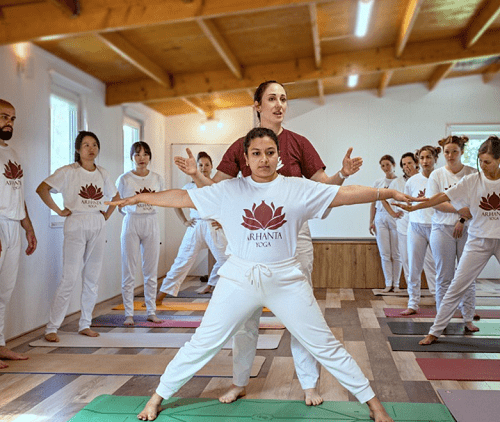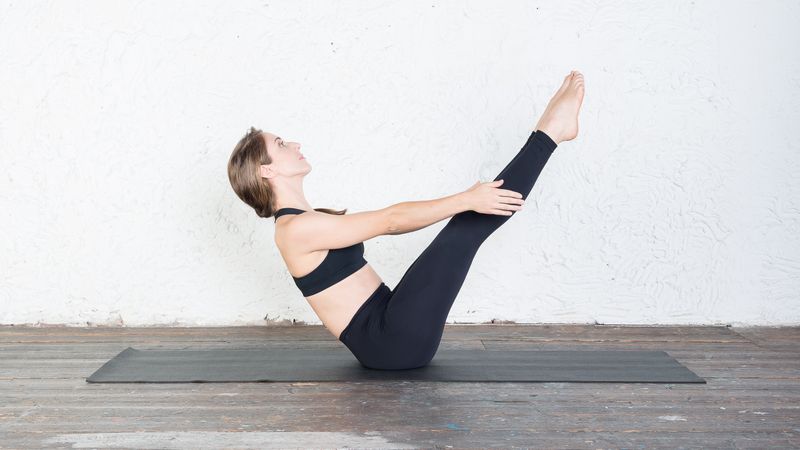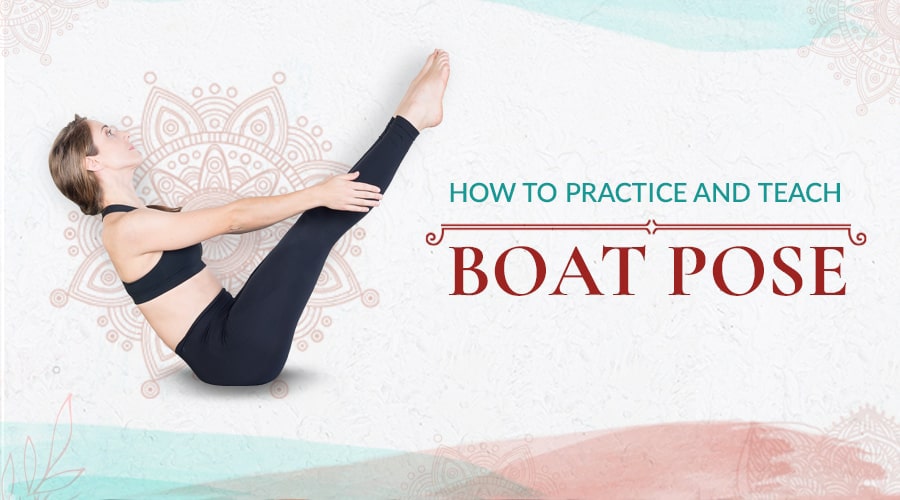Boat Pose, known also by its Sanskrit name Paripurna Navasana, is a pose that adapts well to both new and experienced yoga practitioners. It draws on a combination of strength, flexibility, balance and mental focus so is a great choice to include in your regular yoga practice.
Benefits of Boat Pose
Boat Pose helps to improves posture, activating the muscles that keep our spine straight and our shoulders back. This helps to counteract the position many of us spend too much time in - sitting at a desk.
Unlike many exercises strengthening the abdominals, Boat Pose doesn’t shorten the front body into a ‘crunch’ position. This makes it even more useful, giving the muscles practice at supporting your body while in a more natural upright posture.
Boat Pose promotes body awareness and balance, both of which are vital for long term health. It also builds strength in multiple muscle groups, discussed in more detail below.
The challenge of controlling the balance and strength demands of this pose is also an opportunity to practice focus and concentration. This can help you find calm and build mental strength.
Which Chakra does Boat Pose stimulate?
As a variation of a forward bend, Boat Pose stimulates the Solar Plexus Chakra. This chakra, also known as the Manipura Chakra, is involved in stimulating and balancing the functions of the stomach, gallbladder, liver, spleen and pancreas.
Who should avoid Boat Pose
You should never practice a pose that causes pain, so pay attention to any feedback your body gives you.
- Boat Pose creates pressure in the abdomen, so may not be suitable if you have abdominal issues such as ulcers, diarrhea, menstrual pain or recent surgery.
- Boat Pose is not recommended during pregnancy.
- Be cautious if you have lower back or spinal issues such as sciatica, SI joint problems or disc herniations.
Muscles Worked by Boat Pose
While Boat Pose is often recognized as a core strengthening pose, it’s also a tough workout for the hip flexor muscles. A large hip flexor called Psoas works hard in Boat Pose to hold your legs up off the ground, whether your knees are bent or straight. Because Psoas naturally acts to rotate the thighs outward while flexing the hip, it can be challenging to keep the legs zipped together and not turned out. The adductors (inner thighs) have to work in coordination with Psoas to maintain the position.
Another muscle group working hard in Boat Pose is the quadriceps, which work to straighten the knees. If your quadriceps have to work extra hard against tighter hamstrings, they will tire faster and you will feel the strain more quickly.
As mentioned, Boat Pose also requires active core muscles. The abdominals and back muscles work to keep you stable, and keep your torso upright in line with your pelvis. Muscles connecting the shoulder blades to the upper back should also be active, drawing the shoulders gently back and down.
Shaking in Boat Pose
If you tend to start shaking while holding Boat Pose, it’s quite likely Psoas is the culprit - it starts to shake as it gets tired, and it’s such a big muscle the shake is felt throughout the whole body. However, shaking can start with whichever muscle is exhausted first - so it could also come from your quadriceps or your core muscles.

Experience authentic Hatha Yoga
Get free access to exclusive guided lessons with master teacher Kalyani Hauswirth-Jain
Boat Pose Step-by-Step
You should always warm up before practicing an asana. It may seem like Boat Pose is too simple to require a warm-up, but that would be a mistake. Your muscles and balance will function better when warmed up, and you will have more flexibility in your hamstrings to make the pose more accessible. Sun Salutations are excellent for warming up the body.

Boat Pose
- Sit with your feet together, knees together and bent, and feet resting on the floor.
- Lean back slightly and grab hold of the back of your thighs.
- Lean further back, draw your belly in and open your chest then lift your feet of the floor.
- Initially keep your lower legs parallel to the floor.
- Let go of your thighs and reach your hands forward, at shoulder level.
- Continue to elongate your back, chest lifted and gaze diagonally up.
- If you feel the mobility and control, straighten your legs. Hold the pose steadily as long as is comfortable. Breath evenly.
Modifications
There are two main reasons for finding Boat Pose difficult. One is the strength required, especially in the hip flexors. The other is the flexibility required, particularly in the hamstrings. If you find it difficult to sit upright in staff pose, you will find it difficult to have a straight back in Boat Pose.
- To take stretch off the hamstrings and allow a straight back, practice Boat Pose with knees bent, shins parallel to the floor.
- To reduce strain on the supporting muscles, you can wrap your fingers around the backs of your knees, and use your arms to help hold up your legs.
Tips for a better Boat Pose
- There should be an approximately 90-degree angle between your torso and your legs, just like when sitting upright in staff pose.
- Your spine should be straight. Think of keeping an equal amount of muscle activity in both your back and your abdomen to support your upright position. You may need to bend your knees - see modifications above.
- Your chest should be open, and your shoulder blades drawn down and away from your ears. Avoid letting your shoulders round forwards.
- Your legs are straight, if possible, inner thighs are engaged, and feet gently pointed.
Straightening your legs in Boat Pose
A straight back is more important than straight legs in Boat Pose. This can be forgotten if we only think about the ‘look’ of a pose. When we keep the benefits in mind, it makes more sense to practice the pose with a strong, steady, upright torso. If your knees need to bend to allow your spine to straighten, then let your knees bend.
If you want to increase your hamstring flexibility, aiming for a straight-leg Boat Pose in the future, it would be beneficial to use other more supported poses to target hamstring length. Relaxed forward bends are a good option.
Boat Pose quick notes
Boat Pose (Paripurna Navasana) is a yoga asana that engages multiple muscle groups, improves balance and body awareness, and stimulates the Solar Plexus Chakra.
The straight-leg expression of Boat Pose requires sufficient hamstring length to allow the spine to stay long and straight.
The most important thing to remember about Boat Pose is that the back should stay straight. Bending the knees is a very useful modification, allowing the pelvis and spine to create a long erect line, thereby inviting the postural and chakra benefits of the pose.

